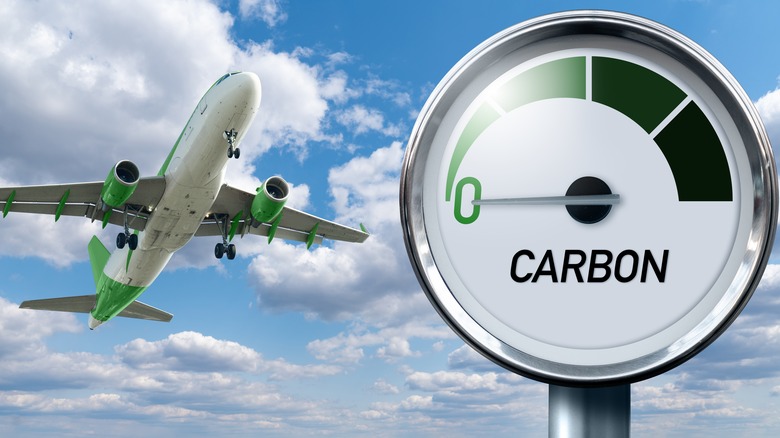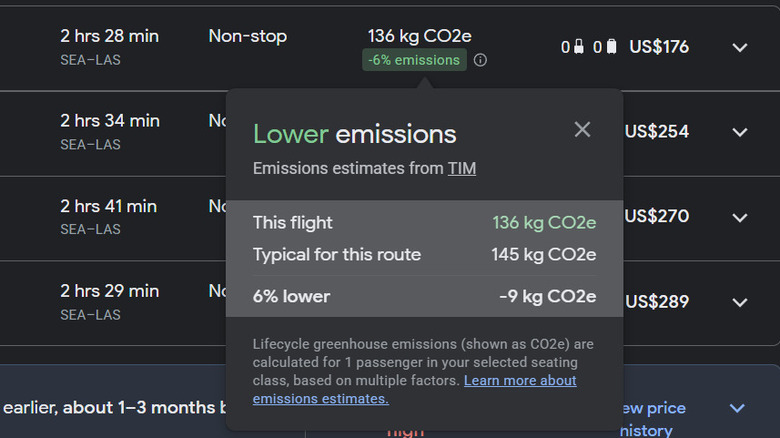Below Average CO2 Flights: What Ticket Aggregators Mean & Why We're Skeptical
Aviation is a significant contributor to air pollution, with close to 2.5% of all carbon dioxide emissions resulting from aircraft. While historically there was little you could do about aviation-led pollution as an individual traveler, ticket aggregators now offer the option to find flights with lower carbon emissions.
At first glance, a low-emissions flight seems like the simplest way to protect Mother Nature. It's a win-win considering that you get to travel with the fastest transportation while still reducing overall adverse climate impact. However, we have strong reasons to be skeptical of the "Below Average CO2" badge used by ticket aggregators.
For starters, while the below-average-CO2 label is often displayed prominently in search results, the method for calculating the emissions isn't highlighted as prominently. It takes a ton of digging to find the exact models and methodology used for the calculations. Spoiler alert: These methods have some significant flaws that bring their efficacy into question. And while these are good enough reasons to be skeptical of CO2 emission estimates, there's more to the story.
The CO2 emission estimate has its shortcomings
While most aggregators offer a link to the emission estimation process at the label, it is never displayed outright. This friction in referring to the estimation methodology, especially during hasty flight bookings, prevents users from fully understanding the label's meaning.
After digging through multiple layers of information, we found aggregators like Google Flights, Expedia, and Skyscanner use Google's Travel Impact Model for CO2 estimations. Long story short, while the model tries taking a lot into consideration while making an estimate, it also relies heavily on approximations and historical data, dating back to pre-COVID times in some cases.
One huge drawback of the Travel Impact Model is how it accounts for the number of passengers and the cargo weight on an aircraft. Rather than tracking real-time passenger and cargo, it relies on the load factor, a term for approximating passenger count and cargo based on historical data. And the model completely ignores weather conditions, which can have a significant impact on aircraft emissions.
Impact of the below average CO2 label
Though the emissions estimates aren't perfect, you can still give them a pass considering they at least try to quantify the emissions. The bigger problem that makes us skeptical is how aggregators want users to perceive the emissions label. To an average ticket buyer, the below-average-CO2 label is placed as an eco-friendly option that lets them travel guilt-free. However, this is way off the actual reality.
Flights, irrespective of a "Lower Emissions" label, release far more CO2 per person per mile than other means of public transport, such as buses or trains. In reality, below-average-CO2 flights may only be marginally less detrimental to the environment, provided external factors such as weather and the load factor don't cause significant deviation in the estimate.
If you see the "Below Average CO2" label next time while booking a flight, remember that the emission estimate is an approximation, and that even if it's true, both scheduled air service and private jets have a significant carbon footprint. If possible, opt for alternative transportation, especially for shorter trips. Also, flying economy rather than business or first class, in which each passenger takes up more space and can bring more luggage, can help reduce per-person CO2 emissions — until, one day, the aviation industry turns to biofuel or finds that electric planes are the future of flight.


